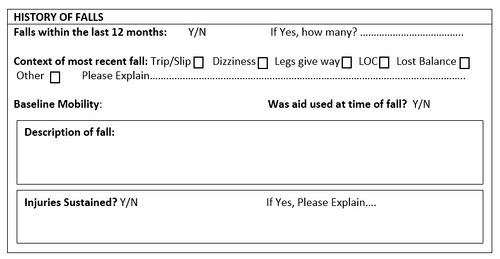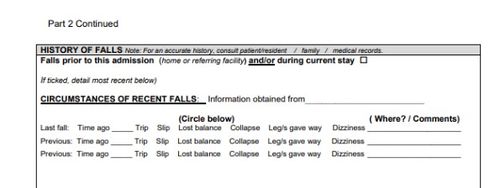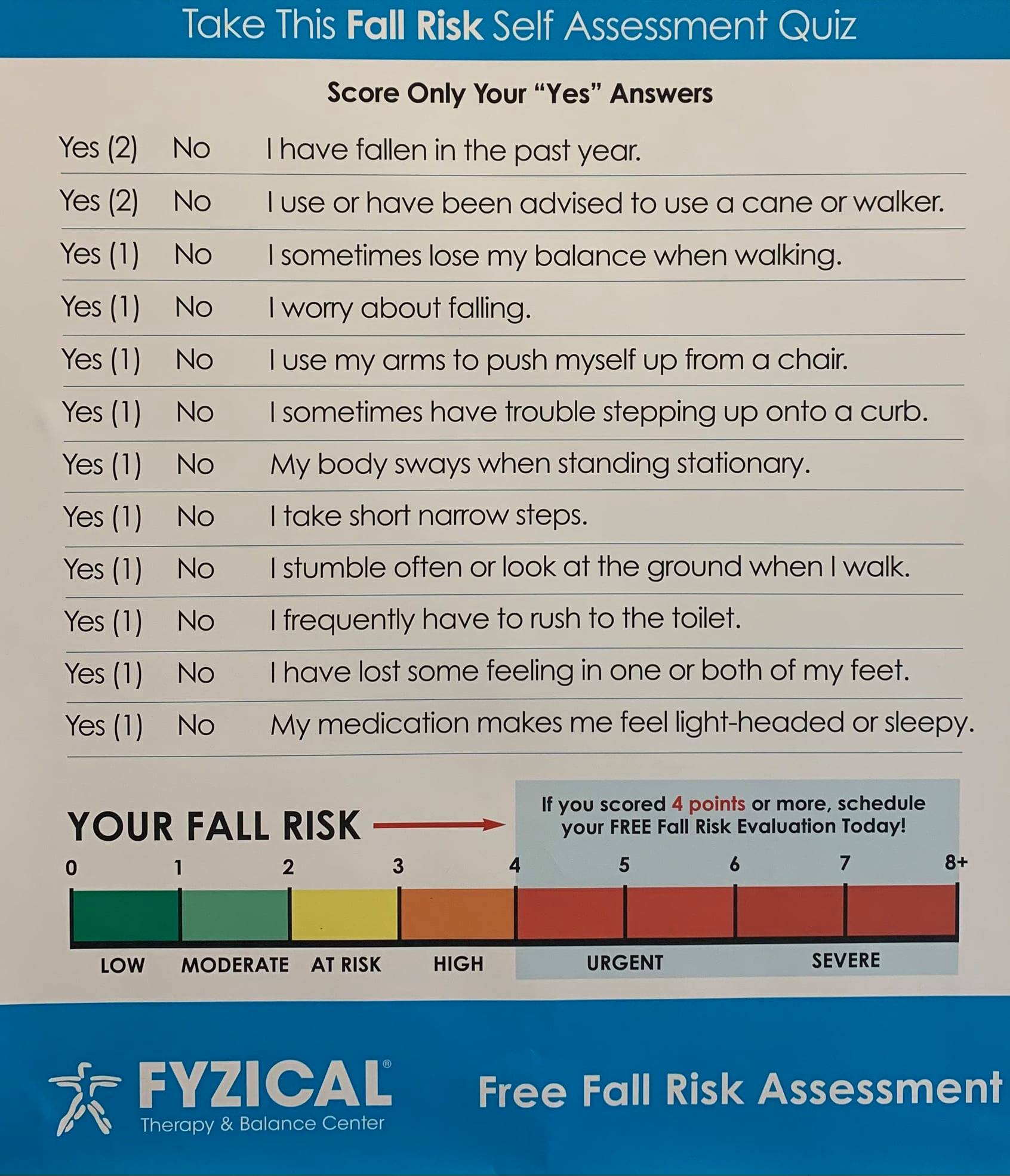Dementia Fall Risk Can Be Fun For Everyone
Things about Dementia Fall Risk
Table of ContentsThe Ultimate Guide To Dementia Fall RiskHow Dementia Fall Risk can Save You Time, Stress, and Money.The Basic Principles Of Dementia Fall Risk The 7-Minute Rule for Dementia Fall Risk
An autumn risk assessment checks to see just how likely it is that you will drop. The evaluation usually consists of: This includes a series of inquiries regarding your overall wellness and if you've had previous falls or troubles with equilibrium, standing, and/or walking.STEADI consists of testing, evaluating, and treatment. Interventions are referrals that may reduce your threat of falling. STEADI includes 3 steps: you for your threat of succumbing to your risk variables that can be enhanced to try to avoid falls (for instance, equilibrium issues, damaged vision) to decrease your threat of falling by making use of efficient techniques (for instance, offering education and learning and resources), you may be asked several inquiries consisting of: Have you dropped in the past year? Do you feel unstable when standing or strolling? Are you stressed over dropping?, your supplier will certainly check your toughness, equilibrium, and stride, using the adhering to fall analysis tools: This test checks your stride.
Then you'll sit down once again. Your company will certainly check how much time it takes you to do this. If it takes you 12 seconds or more, it might mean you are at greater threat for an autumn. This test checks toughness and balance. You'll rest in a chair with your arms went across over your upper body.
The placements will certainly get more challenging as you go. Stand with your feet side-by-side. Move one foot halfway onward, so the instep is touching the large toe of your other foot. Relocate one foot totally before the other, so the toes are touching the heel of your various other foot.
The smart Trick of Dementia Fall Risk That Nobody is Talking About
The majority of falls take place as a result of several adding factors; as a result, handling the danger of dropping begins with determining the variables that add to fall threat - Dementia Fall Risk. Some of the most pertinent threat factors consist of: Background of prior fallsChronic clinical conditionsAcute illnessImpaired stride and balance, reduced extremity weaknessCognitive impairmentChanges in visionCertain risky medicines and polypharmacyEnvironmental aspects can additionally boost the threat for falls, including: Insufficient lightingUneven or damaged flooringWet or unsafe floorsMissing or harmed hand rails and order barsDamaged or improperly fitted equipment, such as beds, wheelchairs, or walkersImproper use assistive devicesInadequate guidance of individuals staying in the NF, including those who display hostile behaviorsA effective loss threat monitoring program calls for an extensive scientific analysis, with input from all participants of the interdisciplinary group

The care plan should also include interventions that are system-based, such as those that promote a risk-free atmosphere (suitable lighting, handrails, get hold of bars, and so on). The performance of the treatments need to be reviewed periodically, and the treatment strategy modified as required to reflect changes in the loss threat analysis. Carrying out an autumn danger administration system utilizing evidence-based best practice can reduce the frequency of drops in the NF, while restricting the possibility for fall-related injuries.
The Ultimate Guide To Dementia Fall Risk
The AGS/BGS standard suggests evaluating all grownups matured 65 years and older for autumn risk each year. This screening contains asking individuals whether they have fallen 2 or more times in the previous year or looked for medical attention for a loss, or, if they have actually not fallen, whether they feel unstable when walking.
Individuals who have fallen when without injury Discover More Here should have their balance and gait evaluated; those with gait or equilibrium problems must receive extra assessment. A history of 1 autumn without injury and without stride or balance issues does not warrant additional analysis beyond continued yearly loss risk screening. Dementia Fall Risk. An autumn threat assessment is needed as component of the Welcome to Medicare examination

Getting My Dementia Fall Risk To Work
Documenting a drops background is just one of the top quality indications for autumn prevention and administration. An important part of risk assessment is a medicine testimonial. Numerous classes of medications increase loss threat (Table 2). copyright medicines in particular are independent predictors of drops. These medicines have a tendency to be sedating, change the sensorium, and impair equilibrium and stride.
Postural hypotension can often be alleviated by reducing the dosage of blood pressurelowering drugs and/or quiting drugs that have orthostatic hypotension as an adverse effects. Use of above-the-knee assistance tube and resting with the head of the bed boosted may also reduce postural decreases in blood stress. The advisable elements of a fall-focused physical exam are shown in Box 1.

A TUG time higher than or equivalent to 12 seconds suggests high autumn threat. The 30-Second Chair Stand test examines reduced extremity strength and balance. Being incapable to stand from a chair of knee height without utilizing one's arms shows increased fall danger. The 4-Stage Equilibrium examination assesses static balance by having the individual stand in 4 placements, each progressively a lot more tough.